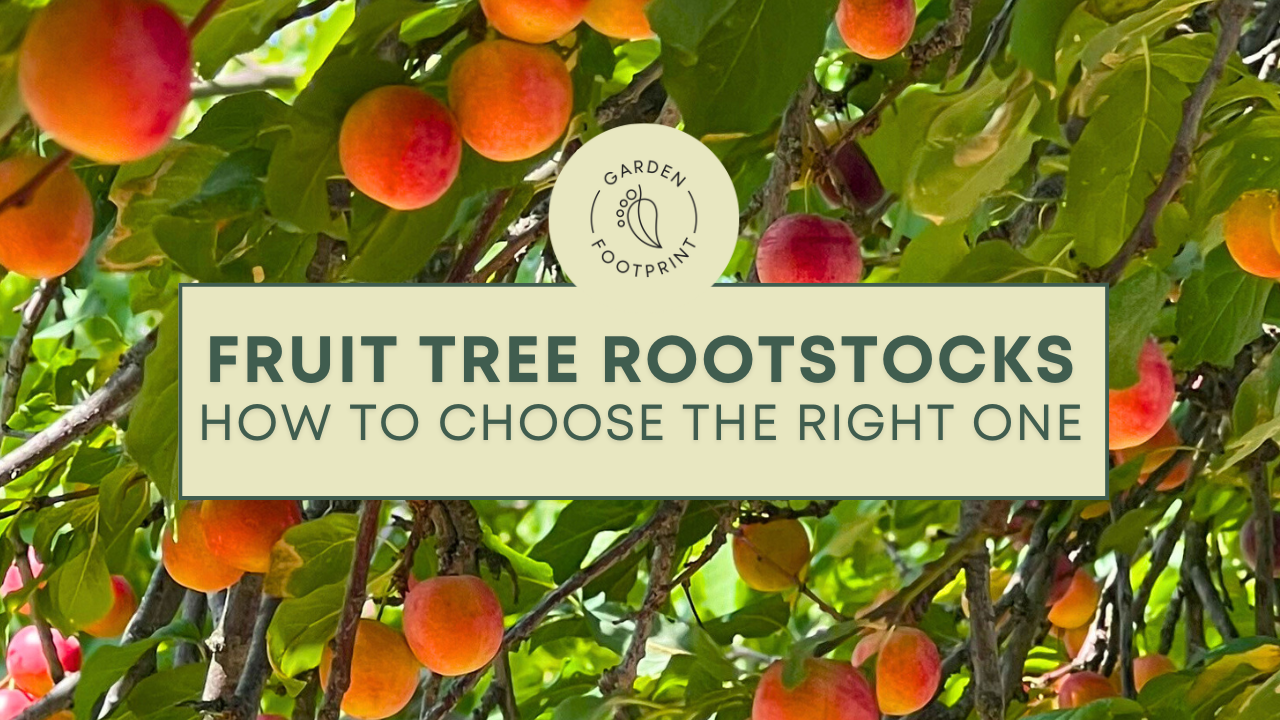
How to Choose the Right Fruit Tree Rootstock
Nov 04, 2025Fruit trees are the most low-maintenance, generous crops we can grow. Once established, they keep giving with very little effort: blossom for pollinators, fruit for the kitchen, and structure for the whole garden design.
Fruit trees can be incredibly simple — buy any old apple tree from the garden centre, plant it, job done. But I really feel this approach takes so much of the joy out of the process. Selecting a tree that truly fulfils your brief is an artform. Let’s jump in and discover how to select the right tree to bring joy to your gardening life.
Why you can’t just plant a pip
It’s tempting to think you could just plant the pip from your favourite apple and grow another. But it doesn’t work that way. Apples are genetically diverse — every seed is unique. A ‘Bramley’ pip won’t give you another ‘Bramley’, it’ll give you something entirely new, often small, sour, or unremarkable. That’s why almost all fruit trees are grafted: a known variety is joined to a rootstock that controls the tree’s size and behaviour.
Why rootstocks matter
The size and behaviour of your fruit tree isn’t set by the variety (like ‘Bramley’ or ‘Conference’). It’s dictated by the rootstock.
Rootstocks determine:
-
Final size of the tree (from patio pots to orchard standards).
-
How soon it fruits (a dwarf apple may crop in 2 years, a standard might take 8).
-
Ease of care (smaller trees are simpler to prune and harvest).
-
Longevity (dwarf trees may live 15–20 years, large standards over 80).
Choosing the right rootstock is the single most important step in making sure your fruit tree fits both your space and your lifestyle.
Common rootstocks explained
Apples:
-
M27 – Very dwarfing (1.5–2m). Pots and tiny gardens. Fruits quickly but short-lived.
-
M9 – Dwarfing (2–3m). Reliable, easy harvests, but shallow roots need support.
-
M26 – Semi-dwarf (3–4m). Good all-rounder for small–medium gardens.
-
MM106 – Medium (4–5m). Classic family garden tree. Freestanding, longer-lived.
-
M25 – Large standard (6m+). For orchards, long life, heavy crops.
Pears (on quince):
-
Quince C – Semi-dwarf, 3–4m.
-
Quince A – Vigorous, 4–5m.
Plums & gages:
-
Pixy – Dwarfing, 2.5–3m.
-
St Julien A – Semi-vigorous, 3.5–4.5m.
-
Myrobalan – Vigorous, 5m+.
Cherries:
-
Gisela 5 – Dwarfing, 2.5–3.5m. Early cropping.
-
Colt – Semi-vigorous, 4–5m. Good garden choice.
-
Mazzard – Vigorous, 6m+. For big spaces.
How to decide what’s right for you
Ask yourself three questions before you buy:
-
How much space do I have? A patio apple on M27 is perfect for a small garden; an M25 needs an orchard.
-
How much fruit do I really want? A single MM106 apple can produce far more than most households can use. Could you dehydrate and keep as kids snacks? Or sell some at the end of the drive?
-
How much maintenance do I want? Dwarf trees are easy to prune and net, but need staking and mulching. Standards need ladders and time, but reward you with shade, presence, and longevity.
Bare-root season: the best time to plant
From November to March, fruit trees are sold bare-root. They’re cheaper, easier to plant, and establish more strongly than pot-grown trees. This is the moment to put down the bones of your garden — the framework of fruit trees and shrubs that will shape the space for decades.
The bigger picture
Rootstocks might sound technical, but really they’re about making sure your fruit tree is a joy, not a burden. Get the size right, and you’ll have a tree that fits your garden, gives generously, and lasts for years with minimal effort.
As the old proverb says: “The best time to plant a tree was 20 years ago. The second-best time is now.”
Next steps
-
Plan your layout: Use the Dream Garden Workbook to map where fruit trees will provide structure, privacy, and harvests.
-
Plant companions: Add edible ornamentals from my Edimentals booklet to make borders productive and beautiful.
-
Design the full system: The Self-Sustaining Garden course shows you how to build a garden where trees and perennials create beauty, biodiversity, and food with less effort.
Garden Footprint's aim is to make gardens low-maintenance, beautiful and edible. Check out our courses to start your journey!
Stay in the loop with Garden Footprint updates from Mike
Don't worry, your information will not be shared.
We hate spam. We will never sell your information, for any reason.

